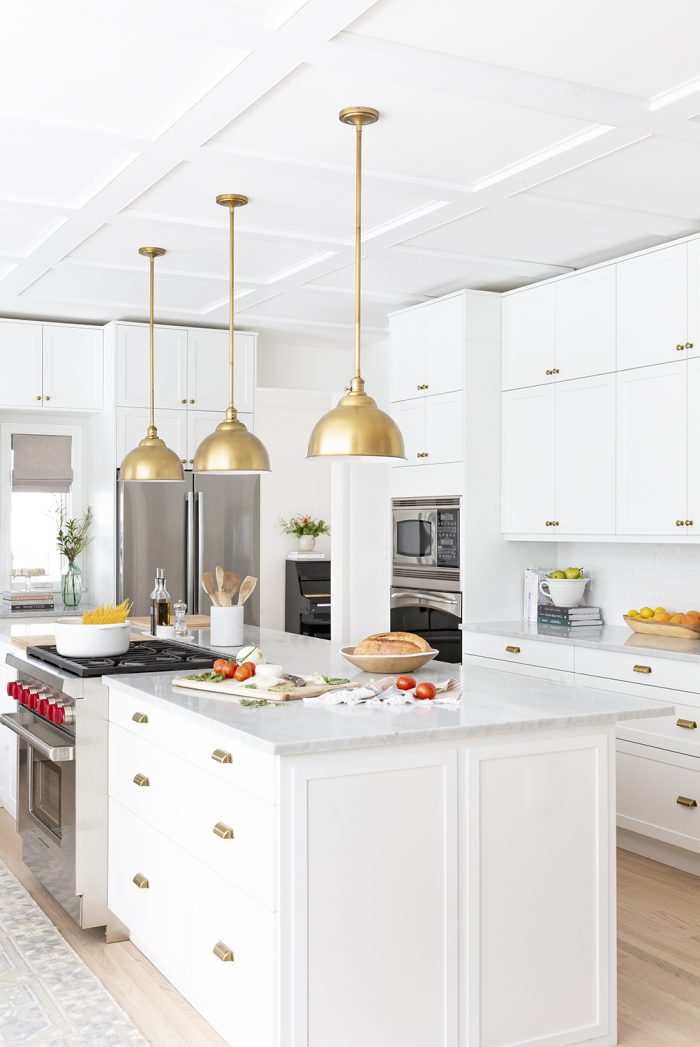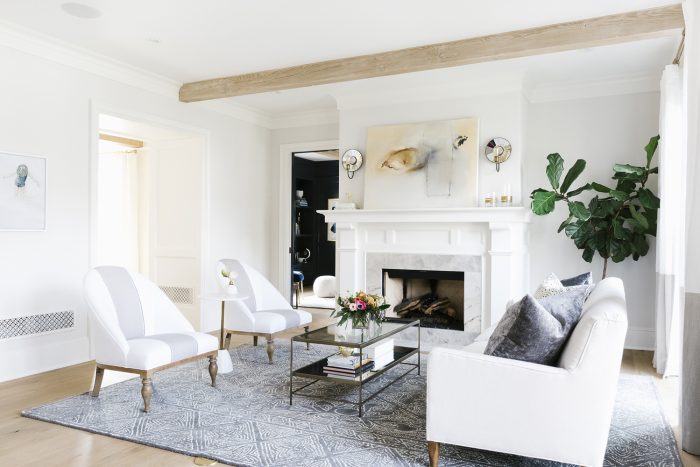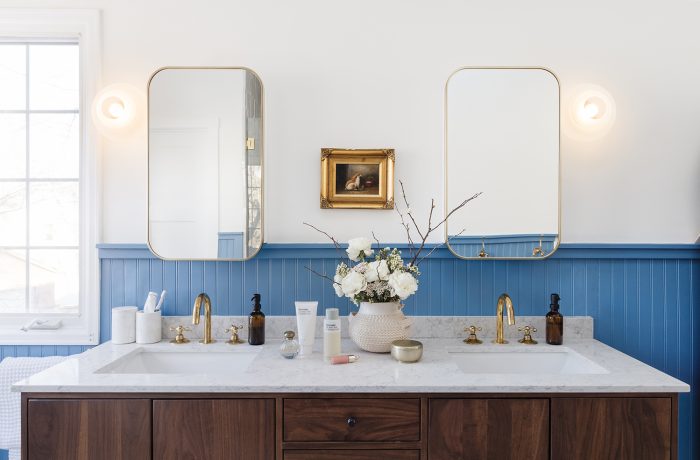Though a bit technical, lighting is arguably our favorite finishing touch in any space. From funky wall sconces to dramatic pendant lights and everything in between, we believe that no space is complete without two to three sources of light beyond standard overhead (to be exact).
But as any designer can attest, hanging light fixtures can actually make or break the look. We can’t help but notice when a wall sconce is hung too high, a pendant light is too low, or a chandelier is too small and unimpressive for a space.
So, we decided to set the record straight once and for all with our designer-approved guide to hanging light fixtures (and beyond). From dining room pendants to fireplace mantel scones, we’re addressing seven common light fixture placements below, as specified by Havenly’s expert interior designers:
1. Above The Dining Table

Specs: Your chandelier or pendant light should be one-half to two-thirds the width of the dining table. When hanging, leave roughly 32 to 36 inches between the bottom of the fixture and the surface of the table.
When hanging a light fixture above your dining table, it’s all about form and function. You want a piece that feels large enough to suit the table and carry a beautiful presence in the space, but modest enough so that eye contact and conversation flow are still paramount. If your favorite light fixture is too small for the space, avoid an off-putting look and double up on it to create extra drama. Finally, if your room has high ceilings, consider installing a multi-tiered piece that will fill in the extra space (if you’re into that style, that is!).
2. In The Living Room

Specs: Add up the length and width of your room in feet to determine your ideal light fixture diameter. For example, a 10-foot by 10-foot room needs a light fixture that’s at least 20 inches wide. For clearance, hang the fixture so the bottom is at least seven feet above the floor (no bumped heads). The exception: you can go as low as six feet if you’re hanging it over a coffee table.
We love a statement chandelier or oversized pendant in a living room as the ultimate focal point. While we swear by the above trick when landing on a proper fixture diameter, bigger is always better if you’re in between sizes. For example, if a room is 13 feet by 15 feet and you’re deciding between a 28 inch or 32 inch light fixture, go with the 32-inch! It will bring the drama and make the space that much more eye-catching.
3. In The Bedroom

Specs: See living room specs above! The only difference here is that you can go lower than a seven foot clearance if you’re hanging the fixture directly over the bed.
A statement chandelier or oversized pendant is one of our favorite layers in a bedroom design! While ceiling fans may check the function box, we’d opt for a chic pendant light and portable fan moment any day. Pro tip: If you don’t already have a dimmer switch on the hardwired light switches in your home, you’ll definitely want one in your bedroom. Be sure to select a fixture and bulbs that are dimmable before you attempt install!
4. Over The Kitchen Island

Specs: When hanging pendants over a kitchen island, leave 30 to 36 inches above the island countertop for a standard eight-foot ceiling. For every foot over eight, add an extra two to three inches!
Pendant lights are a tried and true way to add personality and style to functional, utilitarian kitchens. There’s no hard-and-fast rule to how many. We often see two to three smaller lights above, but feel free to make a statement with a single, oversized pendant. Longer, singular, linear pendants are trending (check this beauty out for a classic look, or this one for a modern twist).
5. Next To The Bed

Specs: When mounting sconces on either side of your bed, hang them four to five feet above the floor. For task lighting, leave roughly six inches between the edge of the bed frame and the mounting plate.
If you don’t have room for lamps, sconces are a great way to add bedside lighting, not to mention sculptural interest. While there are many different ways to hang wall sconces in the bedroom, placement ultimately comes down to the type of light. Reading sconces that emit direct light should be hung closer to the actual headboard, while ambient sconces can be hung directly above each nightstand, similar to a table lamp placement. When in doubt, simply get into bed and adjust the lighting to your liking before installing the fixture! Bed heights and nightstands vary across the board, so staying true to what works for your space is more important than any rulebook.
6. Above The Mantel

Specs: In general, sconces should be hung at eye level. So on either side of a mantel, hang your sconces roughly 60 to 66 inches above the floor.
Fireplace sconces add a decorative touch in addition to providing cozy, ambient lighting, so measurements are a bit more straightforward (eye level, always!). We love creating a focal point above a fireplace with artwork or a mirror, plus sconces hung within six inches on either side of the artwork’s frame. It’s a simple, effective, and timeless look!
7. In The Bathroom

Specs: Bathroom sconces should always be hung at eye level, which for the average person, is roughly 60 to 66 inches above the floor. When flanking mirrors, leave roughly four to six inches of space between the mounting plate and mirror. When hanging sconces above the mirror, leave roughly three to four inches of space.
When it comes to bathroom lighting, form and function are equally important. Bathroom sconces are intended to provide soft, flattering light that will wash evenly over your face, whether you’re touching up makeup, brushing your teeth, or prepping for your day. For that reason, it’s best to choose a sconce with a white glass or milk glass cover, as opposed to clear glass or a fabric shade.
From lighting pro tips to perfecting room flow, our designers are chock-full of expert tips. Start with our style quiz to work with a design pro one-on-one.

